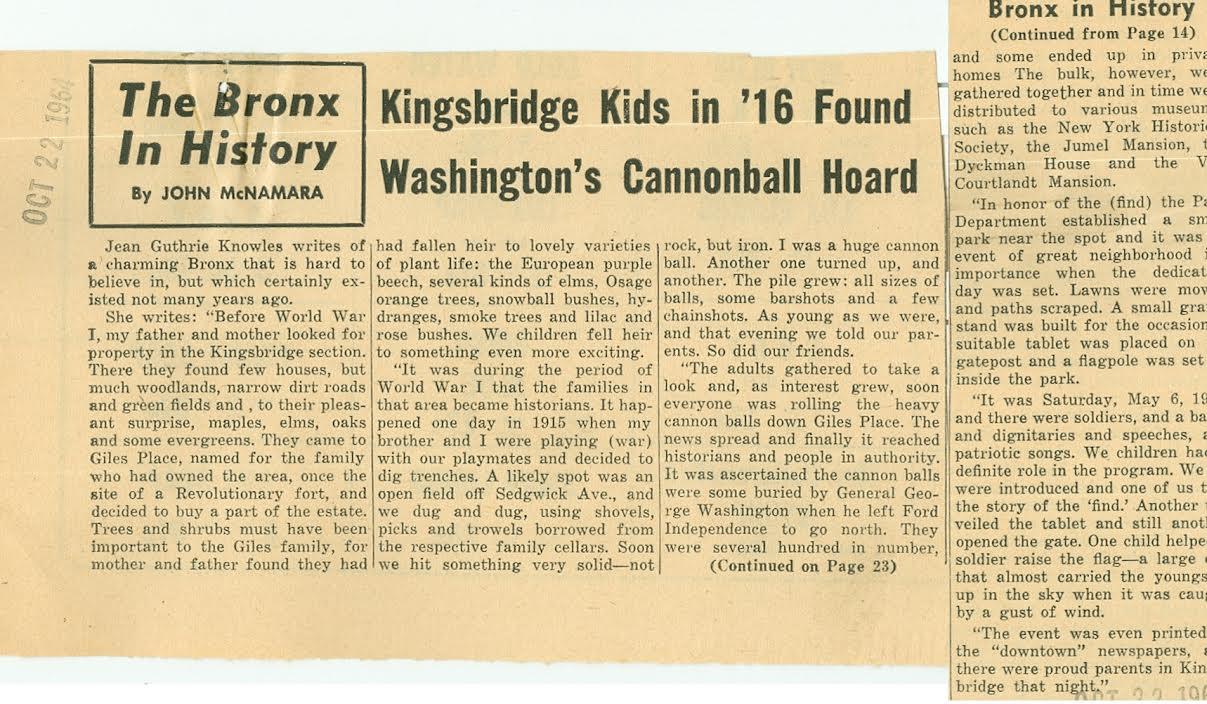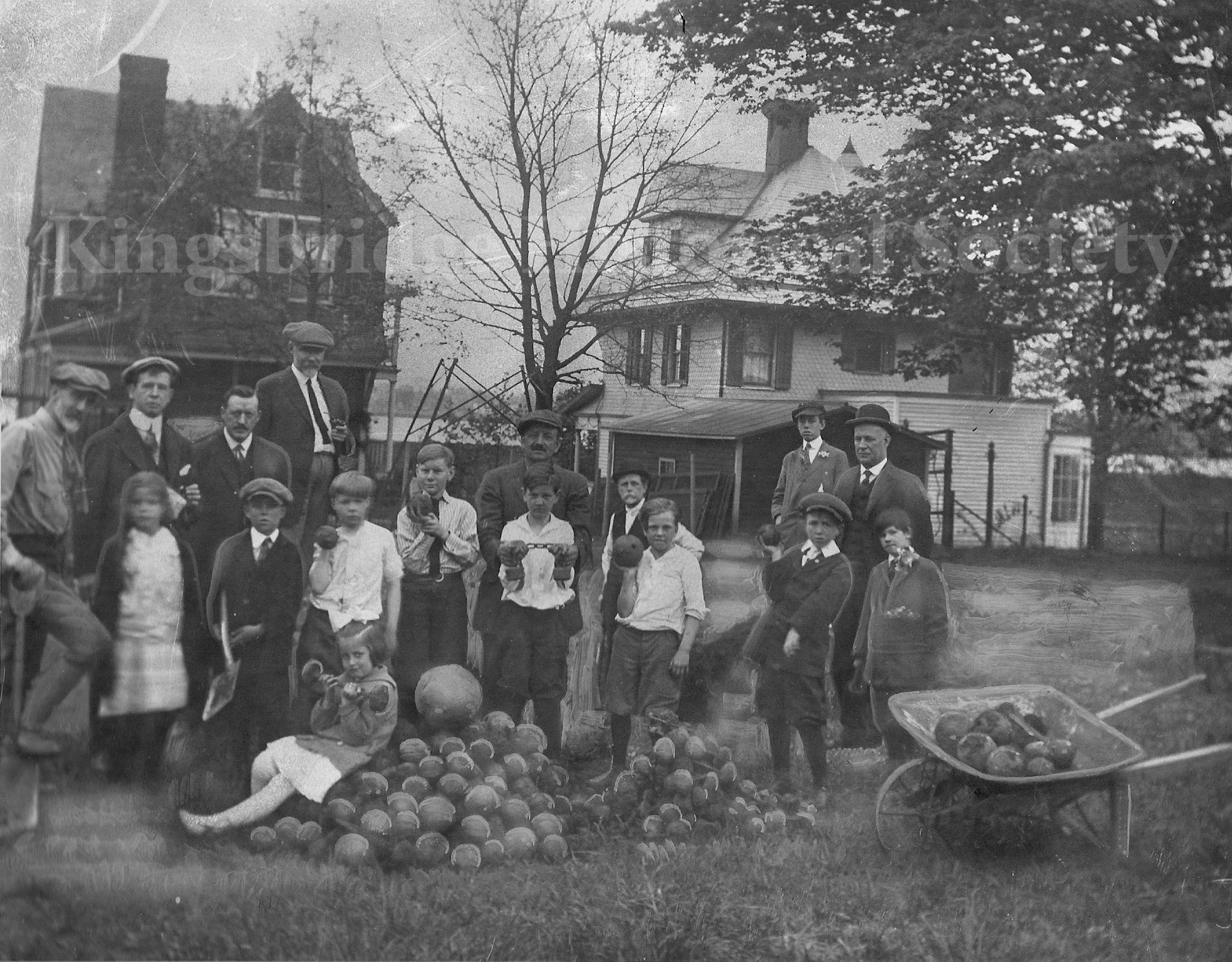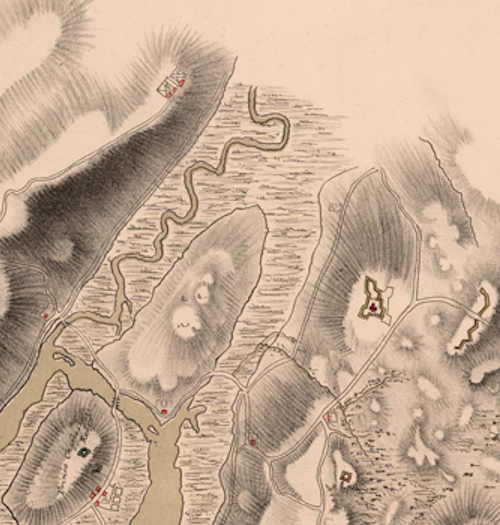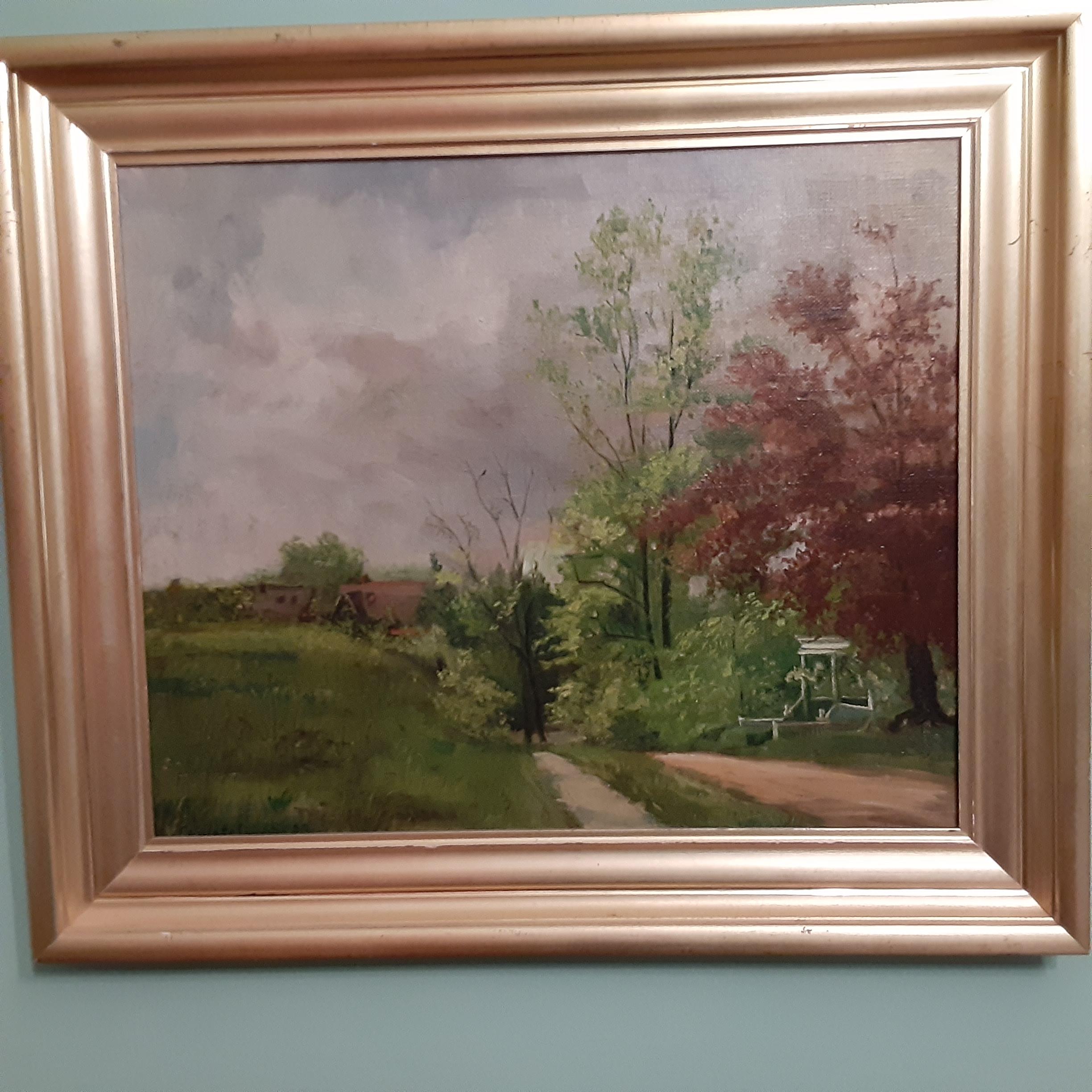Home › Forums › The American Revolution › Giles Place Cannonball Hoard Discovery
- This topic has 3 replies, 3 voices, and was last updated 3 years, 4 months ago by
 ndembowski.
ndembowski.
-
AuthorPosts
-
-
December 7, 2020 at 6:02 pm #1809
One of the most impressive archaeological finds in our neighborhood was discovered by children. See the article and photo below:
 Jean Knowles, the little girl from the above article was a member of the Kingsbridge Historical Society. She is pictured in the photograph below sitting on top of the cache of ordinance.
Jean Knowles, the little girl from the above article was a member of the Kingsbridge Historical Society. She is pictured in the photograph below sitting on top of the cache of ordinance.
The fort that the article refers to was called Fort Independence. It was built by Patriot forces in 1776 but abandoned in a hurry as Washington’s army fled north into Westchester to escape the British army. The fort was then occupied by British soldiers and their German auxiliaries (commonly called Hessians) who were on their way to storm Fort Washington on Manhattan. I came across the following entry in a journal kept a Hessian grenadier battalion from October 30th, 1776:
About three o’clock in the morning, the entire corps commanded by Lieutenant General Von Knyphausen moved out, and an hour after daybreak arrived at a height on the east side of Kingsbridge. En route many burnt-out huts were seen, which had been built in the form of barracks. On the previously mentioned height, 1st Lieutenant von Romrodt and his command had occupied a fort which the enemy had vacated tonight. It was rather large, at least 900 to 1,000 men would be needed to defend it. The enemy had left cannons and ammunition behind. . . Fort Independence covers the entire region, and is especially laid out to cover the crossing from Kingsbridge on the land side to this side. [translated by Bruce E. Burgoyne]
The 1782 British Headquarters map shows the outline of Ft. Independence overlooking the Kingsbridge Valley (The fort is center-right. Marble Hill and the Spuyten Duyvil Creek are bottom left):

Thanks to Tom Casey for sharing the article. You can read a lot more about Fort Independence here and here.
-
December 7, 2020 at 8:02 pm #1810
Nick, Great photograph of Jean Knowles and the rest of children.
-
December 7, 2020 at 11:15 pm #1811
Jean Knowles (1908-1988) was an early member of the KHS and its long time corresponding secretary. The photo above was published in Reginald Pelham Bolton’s book Relics of the Revolution (1916). Jean is the little girl sitting on the stack of canon balls holding a bar shot. The gentleman at the far left leaning on a shovel is Reginald Pelham Bolton who was an historian, early archeologist, writer, leading engineer and an expert on native American and American revolutionary historic sites. The large canon ball atop of the pile is actually a mortar projectile that is owned by the KHS and is in the cellar of the Van Cortlandt Historic House. The KHS also has a collection of these same canon balls, bar shot and sliding bar shot which is a unique American design. In the John McNamara interview with Jean she describes Fort Independence and Giles place when her family moved to the area right before WWI. Below is a painting by Charlotte Livingston (1898-1991) an early member of the KHS and Trustee and friend of Jean Knowles. The painting was painted in 1919 looking south of Giles Place towards Fort Independence street. The field where the canon balls were found and the Forts location was to the left in this painting which was painted only 4 years after the discovery of the canon balls. Ironically it was painted when the Spanish Flu pandemic of 1918 was starting its second wave. So while we can’t experience this bucolic Bronx scene any longer sadly we will experience our own second wave of the Covid-19 Flu pandemic of 2020.

-
December 8, 2020 at 12:49 am #1812
Great information, Peter. Thanks for sharing.
The painting really shows exactly what Jean Knowles was describing in the article with the neighborhood’s “narrow dirt roads and green fields.” Amazing to think this was only 100 years ago–a drop in the bucket of history.
I have been doing some research on the colonial history of Kingsbridge Heights. Just before the Revolution General Richard Montgomery had his farm on the spot depicted in the Livingston painting. But I was curious who was the previous owner of the land. I have not been able to find any deeds related to Montgomery’s purchase nor have I found any deeds related to its sale after General Montgomery was killed in Quebec in 1775. On his deathbed, Montgomery left the estate to his sister Lady Ranelagh of Ireland. I found it strange that he did not leave the property to his wife–Janet Livingston. (As a sidenote, I never really associated our area with the Livingstons but given that it was home to Janet Livingston, Charlotte Livingston, not to mention Livingston Ave, maybe I should rethink that).
After the Revolution most of the Montgomery farm ended up in the hands of Jacob Cole. It was the Cole family that had the family burial ground on Albany Crescent.
When we are done with Covid-19, I want to visit Princeton University, which holds the Edward Livingston papers. That collection contains a “survey and estimate of Richard Montgomery’s farm, Kingsbridge” that I have never seen. It could have some interesting info about the fort and environs.
-
-
AuthorPosts
- You must be logged in to reply to this topic.